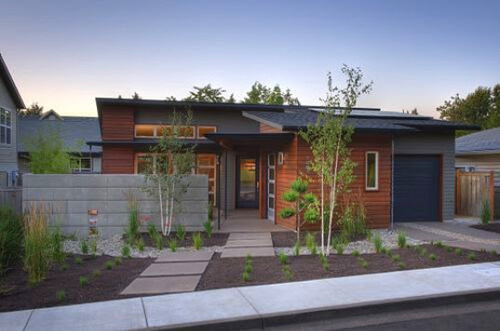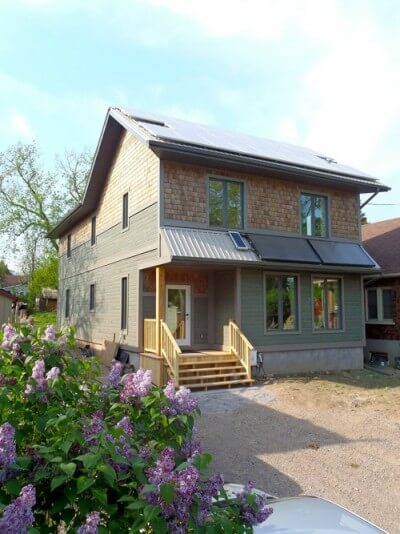The majority of us strive to live greener and more sustainable lives. In doing so, we may choose to reduce our energy consumption and our dependence on fossil fuels. Some of us opt-in to renewable power programs. Many of us compost. A few of us collect our rainwater and several of us have even implemented sustainable power sources (like solar panels, windmills, etc.) to our homes.
These are all wonderful action steps. But, have you ever wondered what it would be like to reside in a completely green home? The creators of these four homes below didn’t just wonder; they worked hard to make it happen. Here are some of the greenest homes in the United States and Canada.
Tah.Mah.Lah
Tah.Mah.Lah is likely the greenest home in the entire United States. In 2013, this house earned the highest LEED (Leadership in Energy & Environmental Design) rating. Every aspect of this house was constructed to have the least environmental impact possible. In fact, the builders and designers of this house hope that its presence will actually have a restorative effect on the area around it.
The SAGE Home

The SAGE Home has the highest, LEED/Earth Advantage Platinum, rating in Oregon. Technically, it’s built to be a model of what green homes could be. The SAGE home is filled with fixtures and flooring made from reclaimed materials utilizing foam insulation and energy efficient appliances, double 2×4 walls to increase insulation and climate control, and even a high efficiency electric heat pump.
The Endeavor House

The Endeavor House is in Canada and is perhaps the greenest house in Canada. The goal of this house isn’t just to be green, but to be self sustaining. While many green houses boast about using reclaimed materials, the Endeavor House utilized reclaimed materials mostly found within 250 kilometers. The designers even managed to reduce the waste generated by construction sites by almost 90%!
Vancouver’s First L.E.E.D Home

While this home doesn’t possess a fancy name like its counterparts, this home in Vancouver was the first home to achieve LEED Platinum status in Canada. The house was built to take advantage of a sloped lot and to naturally heat and cool itself. It was constructed – not just to meet Canada’s sustainability standards – but to exceed them. The designers have definitely accomplished that goal.
3 Steps to Make Your Own Home Green
Are you green with envy? Do you wish that your own home could pass muster? If you don’t have a ton of disposable income to toss at environmental architects and award winning designers, there are still effective steps that you can implement at home to achieve a more sustainable lifestyle.
1.) Switch Your Power Supply
Even if you live in a highly regulated region, most power providers offer sustainable programs that you can opt into. Choose the type of renewable energy you most want to power your home with, and agree to pay the few extra dollars each month.
If you live in a deregulated energy zone such as Canada and some states in the US, shop around for a company that offers you green energy at an affordable rate. Most renewable energy implementations carry tax incentives with them. Any decent tax calculator can help determine what tax breaks, credits, and/or deductions you might be privy too. Residents in Canada can use sites like Alberta Energy Providers to compare and contrast offers (your local area likely has something similar). Click here for more info.
2.) Upgrade Your Lighting
CFLs (compact fluorescent bulbs) are more efficient than incandescents and halogens, but come with a potential mercury hazard. If you desire the most energy efficient lighting possible, you’ll want to upgrade to LED, or light emitting diode, bulbs. LED bulbs use even less power than CFLs and halogens and last exponentially longer. It’s true that LED’s are more expensive upfront, but you’ll more than make up for the expense in long-term savings.
It’s also important to take as much advantage of natural light as possible. Arrange your furniture so that you can maximize windows instead of lamps for activities like reading and crafting.
3.) Small Habit Changes
Building your own compost pile (or setting up your own worm bin if you live in an apartment); taking shorter showers; only washing full loads; hanging your clothing up to dry; and using a programmable thermostat are all important steps that you can do today to make your home more sustainable. When you’re ready to remodel, be sure to choose sustainable and reclaimed materials and eco-friendly design selections.
Anyone can have a green home; you just have to be willing to put in a little effort. Start small today and save up for big changes later. Who knows, maybe your house will appear on a green list someday!





Nice blog! https://www.google.co.in/search?q=green+home&espv=2&biw=1024&bih=707&site=webhp&tbm=isch&tbo=u&source=univ&sa=X&ved=0CEYQsARqFQoTCPqEle_ir8gCFYJXjgodVLcPpA